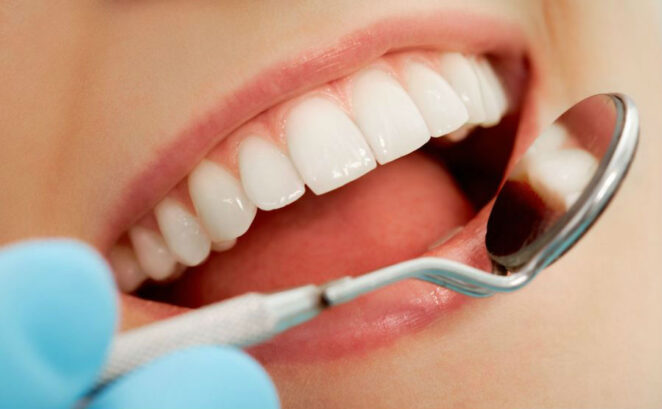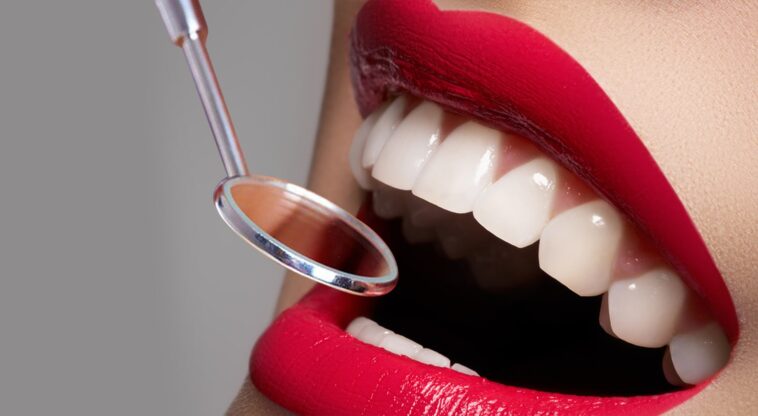People love it when they have a beautiful smile. However, there are many reasons why your smile may become less beautiful with time. You may injure and break a part of your tooth. Alternatively, your teeth may chip away naturally with age or due to the overconsumption of acidic food. Whatever might be the reason for tooth deterioration, you can visit a dentist to get your smile restored.
More About Tooth Veneers
Veneers are porcelain coatings that are placed on the tooth. They can cover gaps in the teeth; they can also fill up spaces in case of cracks or chipped teeth parts. However, getting these porcelain covers is a long-term treatment as these covers lasts for as many as thirty years. Hence, if you may want to know more about the procedure, its utility, whether the process itself is painful, etc. You can go to this website to learn about the procedure and the pain associated with it.
Do Dental Veneers Cause Pain And Discomfort

The Preparation Stage For Getting The Veneers
The first step to getting dental coatings is to visit a dentist. A dentist will examine your teeth and let you know if you should get porcelain covers or not.
Before proceeding with any procedure, the dentist will repair any decay in your tooth. The treatment will depend on the presence and extent of decay in your teeth. If there is severe decay and bacterial infection, the treatment might also need a root canal, and this procedure can be quite painful.
Root canals affect deeper dental areas, and it might affect nerve endings, which can cause a lot of pain. However, if you have no signs of decay, then the dentist can directly start the procedure (for getting veneers).
For the procedure, the dentist will take your tooth measurements for the porcelain coating. For this, the dentist will apply a mix of silicon and oxides to your teeth. This material is known as putty, and this can make an imprint on your teeth. Once the imprint has been taken, the putty is removed. Applying the putty mix is not at all painful; however, you might have to sit still for some time when the putty mix is inside your mouth.
Post this; the dentist will trim the outer enamel of your teeth. The initial trimming is done to preserve the overall thickness of the teeth. The thickness is important for the biting force and also for the facial movements. Also, preparatory trimming of the enamel removes only about 0.5 millimeters of enamel.
Enamel is the hard outer covering of the teeth, and it protects the teeth against chemicals and extreme (hot and cold) temperatures. If the enamel is removed or damaged, then your teeth become extra sensitive, and you might be unable to eat anything that is sweet or cold. But veneers(porcelain covers) as such do not make the teeth sensitive. On the contrary, they are used to treat loss of enamel cover as the covering protects against extreme sensitivity as well.
Getting A Temporary Covering

At times the dentist might give you a temporary covering for a week or two before giving you the final coating. This is done to make sure that you are comfortable with the coverage and that you will be able to live with it for the next ten to twenty years. The temporary coating is not bonded strongly to the underlying teeth, but they allow you to gauge your comfort level with the coating.
The Final Stage Of The Procedure
In the final stage, the temporary covering is removed, and the permanent coating is added. The teeth are first coated with a gel which is known as the etching gel. It creates a rough undulating surface on the outer surface of the teeth. These rough regions are used to fix the porcelain coating tightly onto the tooth. The rough edges form cross-links that keep the porcelain coatings in place.
After applying the etching gel, the porcelain coating is added. Post this, a binding solution is added to the teeth. The binding solution contains certain chemicals that are sensitive to light. Hence, if the binding agent is exposed to light, it binds the porcelain coating tightly to the original tooth. All the above-mentioned steps like coating with the etching gel, applying the binding solution, etc., are not painful.
Taking Care Of Dental Heath After The Procedure

Porcelain coating offers a beautiful, damage-free smile for a long time, but you have to take good care to maintain them. So it is important to maintain regular dental hygiene by regularly brushing your teeth two times a day. Visiting the dentist at intervals of six months to check for oral health issues.
According to this dependable Avon Lake dentist, veneers can last up to 20 years with proper maintenance.
Apart from this, the doctor might give you a night bite guard. The bite guard will make sure that you do not damage the covering accidentally while you are sleeping. Again, you should wear a mouthguard while playing any rough sports like rugby or football. These mouthguards will make sure that your tooth and the porcelain covers on them do not get broken or damaged in any way.
It is also vital to clean the edges where the coatings meet the natural tooth. These edges are notorious for the growth of bacteria; hence these places need to be cleaned regularly to prevent bacterial infection.
Conclusion
Porcelain coverings or veneers are quite popular because they can be easily customized based on the natural shape and color of your teeth. They make your smile beautiful because the teeth look whiter, and the broken edges or gaps are removed.
Veneers are more expensive than traditional whitening procedures, and they cannot be performed if the natural enamel is highly degraded. Hence a professional dentist is the best person to guide you through the entire procedure. It is a long-term procedure, and you must spend some time researching about the procedure before you actually get the procedure done. Arrange a visit to Kumra Orthodontics and find out more about how exactly dental veneers can work for you.



